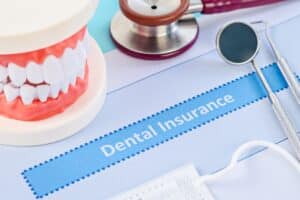For kids and parents alike, losing baby teeth may be a joyful moment. In general, children lose their first baby tooth between the ages of six and seven, according to the American Dental Association (ADA). Throughout childhood, baby teeth continue to fall out at different intervals, with the final ones falling out around the age of twelve. Although loose baby teeth typically fall out on their own, some kids might want to expedite the process. Here are a few safety guidelines and cautions for tooth extractions or pulling a tooth done at home.
Pulling a Loose Baby Tooth: Dos and Don’ts
When a baby tooth comes free, there’s not much tissue holding it in place, according to the American Academy of Pediatrics (AAP). Youngsters who are eager to get rid of these teeth could use their tongues or fingers to wriggle them out on their own.
Assist your child in extracting a loose tooth with these tips from the AAP: Using a fresh piece of gauze or tissue, grasp the tooth and twist it quickly. The ADA advises parents to use caution while extracting teeth at home. A sufficiently loose tooth can be gently squeezed until it falls out.
If your child declines help, you should not try to remove their teeth. Most baby teeth will eventually come out on their own. Rather than trying to extract a tooth at home, take your youngster to a dentist in Haltom City, TX. According to the AAP, your child’s dentist might suggest extracting it.
What to Do After Pulling a Tooth at Home
The loss of their baby teeth might cause anxiety or fear in certain kids. Reassure your child that losing their baby teeth is a perfectly natural aspect of growing up after you’ve extracted their loose tooth. The tooth fairy will then reward you both if you lay their lost tooth under their pillow.
The chance to reinforce healthy oral practices arises with the loss of a baby tooth. Similar to adults, children’s teeth should be brushed twice a day and flossed once a day. As the AAP points out, you might need to provide some assistance because youngsters might not have the dexterity to brush their teeth correctly until they are between the ages of seven and ten. The American Dental Association advises careful brushing because the area where a baby tooth was lost may be sensitive.
Can You Pull a Permanent Tooth at Home?
An adult tooth should never be handled the same way as a baby tooth that has already come loose, even though it may be gently pulled. Unlike baby teeth, adult teeth are not supposed to break free and fall out. A loose adult tooth may be a sign of a health problem that needs to be checked. If your child has a loose adult tooth, take them to a dentist in Haltom City, TX for an examination.
According to the Mayo Clinic, a more severe type of gum disease can cause adult teeth to come loose. Among the signs of gum disease to be aware of are:
- Inflamed, red, and swollen gums
- Gums that are sensitive and bleed readily
- Bad breath Gums receding
- spaces between teeth
Adult teeth that become loose can also be caused by accidents, as stated by Stanford Children’s Health. When you have your first appointment for tooth extractions in Haltom City, TX, your dentist will assess your mouth, teeth, and x-rays to determine the most suitable extraction technique. Additionally, children can experience dental injuries due to falls or other accidents. Injuries to their teeth can also happen during play or sports activities. It is crucial to promptly seek dental care in these situations to ensure proper treatment.
Baby teeth will eventually loosen and fall out on their own, but in some cases, extracting a tooth at home could be appropriate for kids who are dying to see the tooth fairy. When it comes to adult teeth, it’s never a good idea to extract them yourself. If you do encounter a loose tooth, you should visit your dentist right away. See your pediatric dentist for further information about extracting baby teeth.





